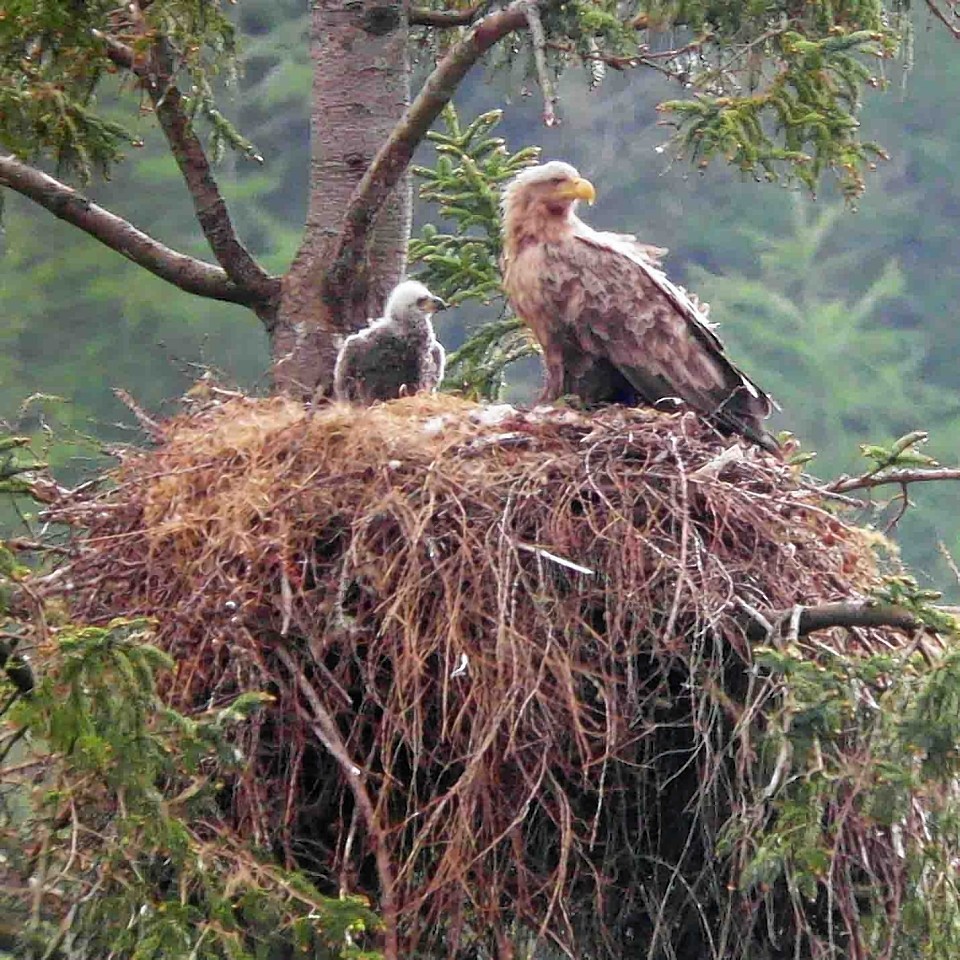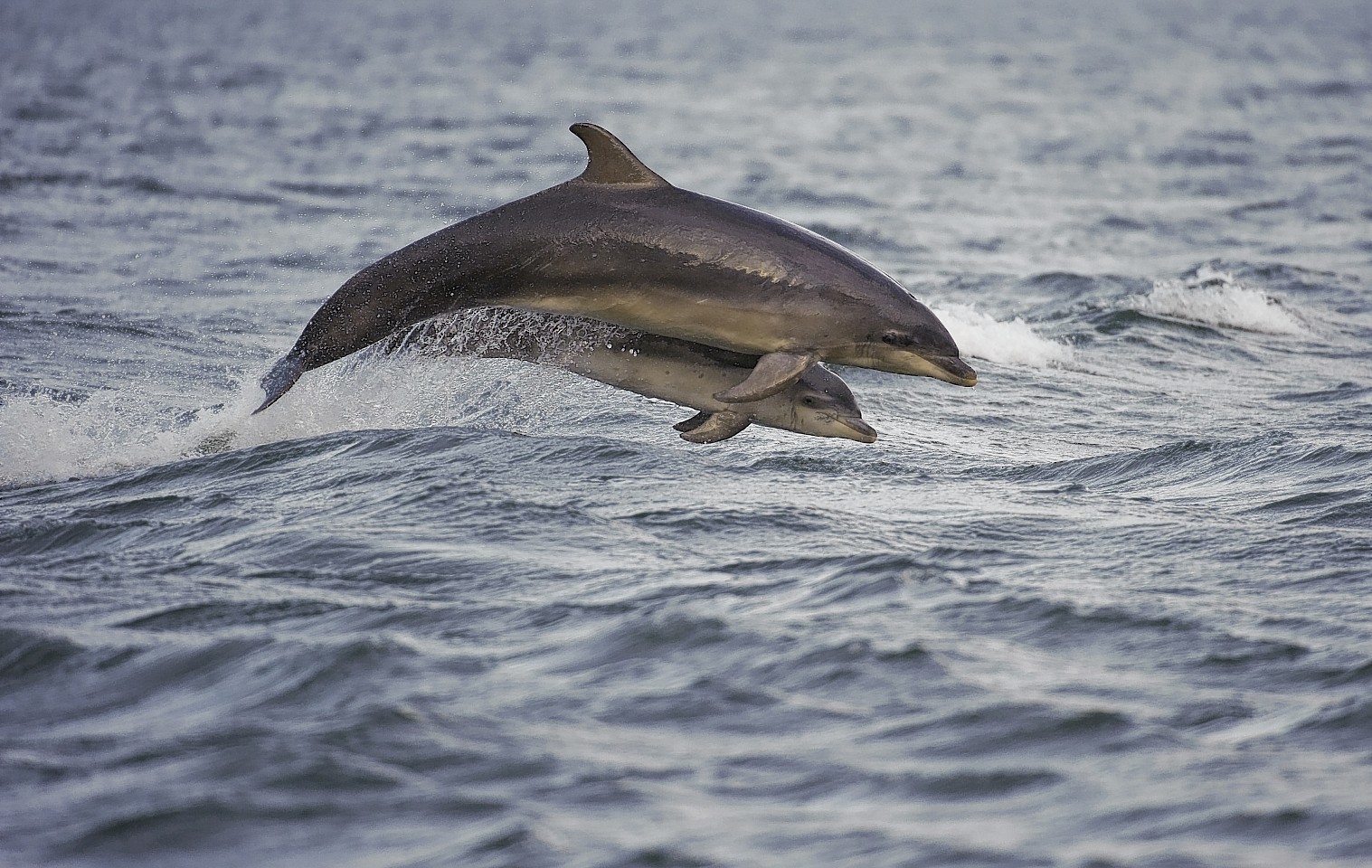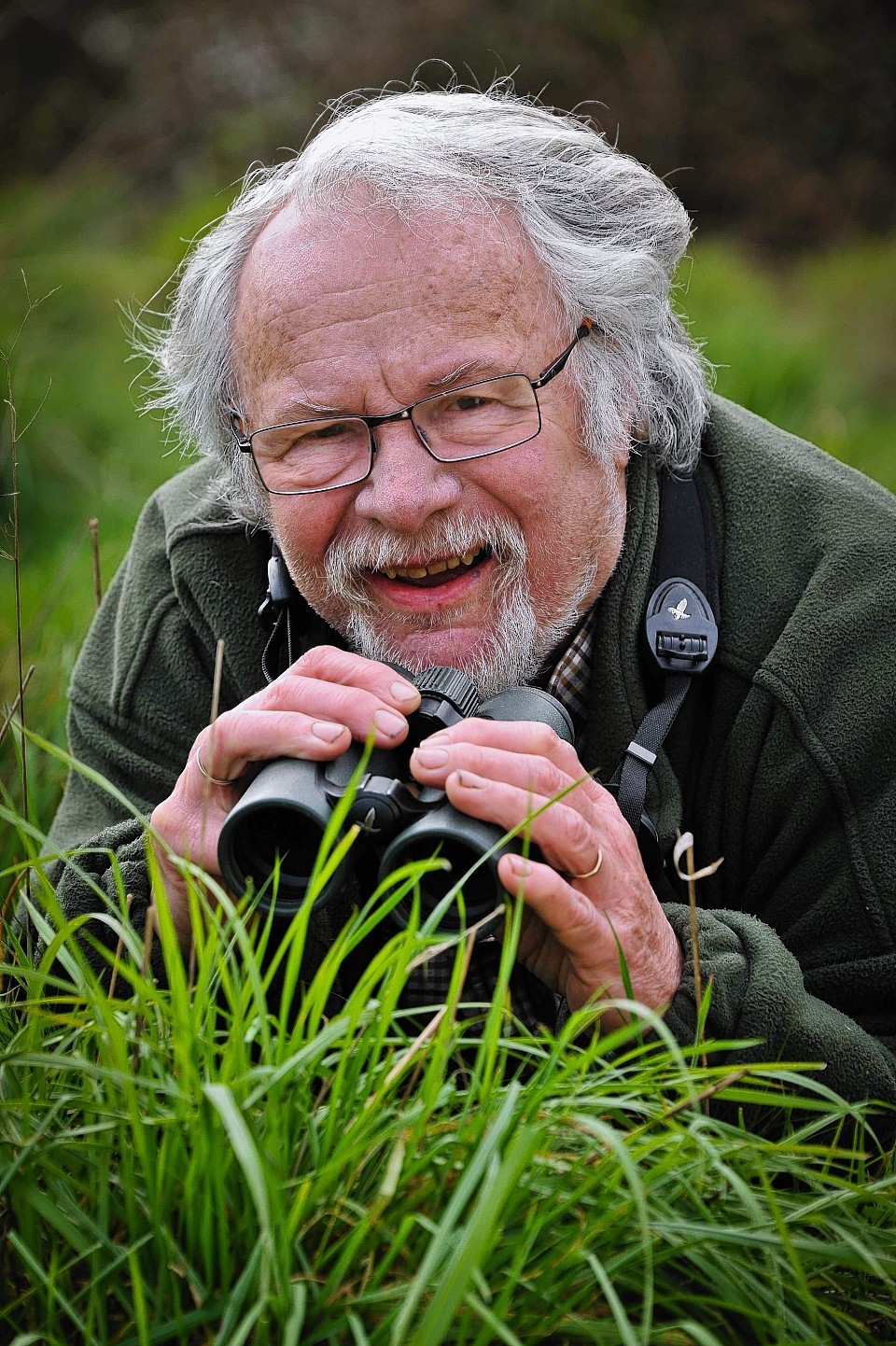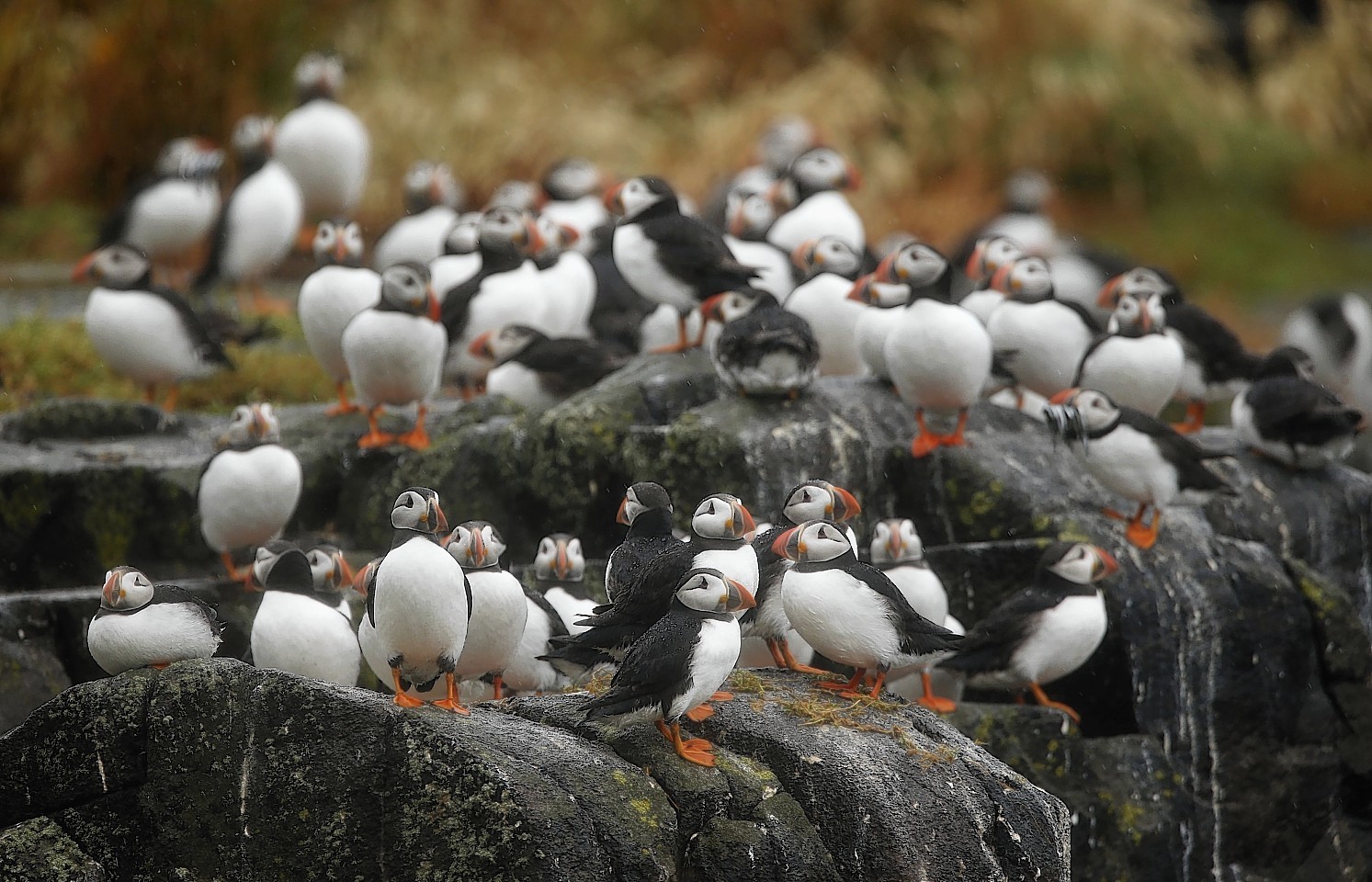The North of Scotland is blessed with some of the most spectacular wildlife in Europe, from bottlenose dolphins swimming in the Moray Firth to golden eagles flying high over the Cairngorm Mountains. It isn’t just the big species that wildlife watchers come to see either – the plethora of puffins, gannets and guillemots that hug our coastlines make Scotland’s seabird colonies among the most spectacular sights, sounds and indeed smells on the planet.
Birds also mean business. Tourists splash out £65million a year watching Scotland’s feathered friends – and those that wear fur or scales or blubber – and, when their spending on accommodation, food and travel is taken into account, the total rises to £276million, according to a report by Bournemouth University for the Scottish Government.
The Highlands and Islands enjoy a large cut of the wildlife pie, benefiting from £124million of spending, in addition to the £65million that’s spent on the West Coast and around Loch Lomond. Wildlife tourism can bring even bigger benefits to specific local communities, with whale watchers spending £7.8million on the West Coast, white-tailed eagle fans pumping £5million into the economy of the Isle of Mull and dolphin spotters parting with £4million around the Moray Firth.
Throughout the country, that spending translates into support for the equivalent of 2,763 full-time direct jobs in tourism alone, including 1,386 posts in the Highlands and Islands. Amid discussions about how to create employment and retain young people in the north, such figures may well raise a few eyebrows.
The growing popularity of wildlife tourism comes as no surprise to Sally Dowden, who launched tour operator Speyside Wildlife in 1991 and now employs a team of 20 staff running holidays in Scotland and further afield.
“When we started the business, the plan was just to run birdwatching holidays in Speyside,” explains Ms Dowden. “That plan lasted all of a week. After the first week, our guests said ‘That was great – now what’s next?’
“So we quickly expanded into running holidays to other parts of Scotland – like Shetland and the Outer Hebrides – and then abroad to places like Majorca and New England. We now run holidays all over the world, from the Arctic to the Antarctic, and we’re known for our trips to Spain, North America and Eastern Europe in particular.”
As she prepares to celebrate her firm’s silver anniversary next year, Ms Dowden reflects on the growing diversity within the sector. When she started, customers wanted to visit Speyside to see iconic British species – such as capercaillies, ospreys and red squirrels – but now people are interested in a much wider variety of wildlife, from dolphins and seals through to the badgers and even pine martens that can be seen from the company’s mammal hide on the Rothiemurchus Estate near Aviemore.
Wider tourism industry
Ms Dowden also recognises the benefits that wildlife watching can bring to the wider tourism industry.
“If a bed and breakfast or hotel can work with a wildlife guide or a tour operator then they can encourage their customers to stay for an extra night by helping them to book onto a guided tour or a session in something like our mammal hide,” she says.
“I think the two biggest changes I’ve seen have been the creation of Wild Scotland – the trade body that really gave the industry a voice – and the Scottish Government report into the economic impact of wildlife tourism. Before that, I don’t think a lot of people realised the sector even existed – let alone that it was worth so much money to the economy.”
Figures from Scottish Natural Heritage (SNH), the public sector body that advises Holyrood on the environment, paint an even rosier picture of the industry. Using a broader definition of wildlife tourism – which included visitors who just watched animals and birds as part of their holiday and not as the primary reason for coming to Scotland – the economic impact rose to £127million.
Putting that figure in context, the same SNH report reckoned that field sports – hunting, shooting and fishing – brought in about £136million, while walking holidays generated £533million and adventure activities such as mountain biking and kayaking accounted for £178million. The value of tourists who come “just to see the views” was put at £420million, adding weight to the argument for protecting Scotland’s landscapes and scenery.
The ‘Springwatch effect’
One of the factors that have influenced the growth of the industry is the fact that potential customers have been able to see those landscapes and views on their television screens so much over the past decade – and the wildlife that lives there too. The BBC launched its Springwatch series in 2005, inviting viewers to join presenters Bill Oddie, Kate Humble and Simon King in exploring Britain’s countryside and its creatures.
Since then, sites around Scotland – including Mull, Islay and Strathspey – have enjoyed what’s known in the trade as the “Springwatch effect”, with viewers turning into paying customers as they get up off their sofas to see the wildlife for themselves. Spin-off series such as Autumnwatch and Winterwatch and a succession of presenters like Chris Packham, Michaela Strachan and Gordon Buchanan have meant that the shows regularly have among the highest ratings for any programme on BBC2.
Springwatch hasn’t been the only game in town, with companies hailing the influence of other televisual treats, such as Hebrides: Islands on the Edge, a documentary series narrated by Crieff’s own Hollywood heartthrob, Ewan McGregor.
VisitScotland, the national tourism marketing agency, hasn’t been slow to capitalise on the popularity of wildlife either. The organisation declared 2013 to be the “Year of Natural Scotland” – echoing the 2009 and then the 2014 “Years of Homecoming” and the “Year of Food and Drink 2015” – and pumped £3.4million into a marketing campaign, which resulted in a 12% year-on-year rise in the number of visitors to rural areas and the coast between January and August.
Next steps
After receiving such a boost from television programmes and advertising campaigns, what’s the next step for the wildlife tourism industry in the North of Scotland? Caroline Warburton – who ran trade body Wild Scotland for ten years before joining the Scottish Tourism Alliance – thinks wildlife businesses share many of the challenges faced by other sectors.
“A lot of areas – whether it’s wildlife tourism or country sports or adventure activities – face the same issues when it comes to marketing and access to markets,” says Ms Warburton, who is the STA’s national strategy delivery coordinator. “A lot of the companies working in the sector are either small businesses or micro-businesses so it’s about looking at their needs.”
Ms Warburton points to one example from Wild Scotland, which is developing a training scheme for wildlife tour guides to help them with the “softer skills” needed when taking guests out into the countryside. The course is expected to help impart knowledge about topics including the night’s sky, the derivation of Gaelic hill names and edible plants – all subjects about which tourists quiz their wildlife guides.
The 2020 national tourism strategy, which was launched in 2012, is different because it is being led by the industry itself through the STA, rather than through the Scottish Government or VisitScotland. More details of how businesses aim to develop the nature tourism sector are expected in May, around the same time that Highlands & Islands Enterprise is also expected to release a report into the challenges facing the sector that need to be overcome.
“One of the issues is promoting Scotland internationally as a year-round destination,” adds Ms Warburton. “We’ll be talking to VisitScotland about the message that’s being put out there about wildlife tourism. One of the unique selling points is that outdoor activities and wildlife watching aren’t confined to the summer – you can see different wildlife all year round.”
Small business support
And there’s definitely still a demand out there for further marketing. Marine biologist Deborah Benham setup eco-holiday company Wild at Heart in Forres in 2008 to offer holidays, short breaks and team-building away days.
“I don’t think enough is done to promote Moray as an area for wildlife watching,” she says. “I think things have gone very quiet recently, with people going back to promoting events and food and drink and whisky instead.
“Moray is so unspoilt and so diverse – you can be down on a beach one day watching dolphins and seals, then up on the River Spey the next day, then doing birdwatching or bushcraft the next day.”
Ms Benham has recently taken over as managing director of Newbold House, a retreat centre in Forres that offers courses, workshops and holistic education events. Like many people working in wildlife tourism, she needs to work at the centre rather than just relying on her tourism work.
“It’s very hard for micro-businesses to do things like collective marketing – you’ve got to design the products yourself, then market them, then actually run them, while still doing all the basics like making the sandwiches for your guests’ packed lunches or cleaning out the mini-bus,” she says. “So marketing is definitely an area in which I’d like to see more help for micro-businesses.”





